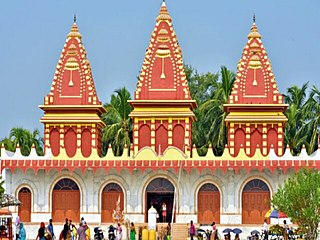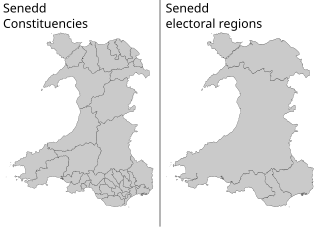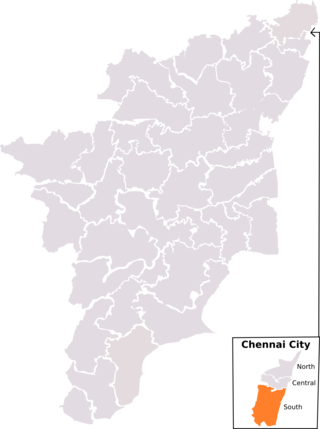Members of Parliament
| Elections | MP [1] | Party | Notes | |||||||||||||
|---|---|---|---|---|---|---|---|---|---|---|---|---|---|---|---|---|
| 1963 | Jonathan Muruli | KADU | ||||||||||||||
| 1969 | Seth Lugonzo | KANU | One-party system | |||||||||||||
| 1974 | Clement Lubembe | KANU | One-party system | |||||||||||||
| 1979 | Jeremiah Khamadi Murila | KANU | One-party system | |||||||||||||
| 1983 | Seth Lugonzo | KANU | One-party system. | |||||||||||||
| 1988 | Seth Lugonzo | KANU | One-party system. | |||||||||||||
| 1992 | Benjamin Ashona Magwaga | KANU | ||||||||||||||
| 1997 | Joseph Jolly Mugalla | KANU | ||||||||||||||
| 2002 | Bonny Khalwale | NARC | ||||||||||||||
| 2007 | Bonny Khalwale | New Ford Kenya | Nullified February 2011 | |||||||||||||
| 2011 | Bonny Khalwale | New Ford Kenya | Re-elected in May 23, 2011 By-election: Khalwale (13,208), Shinali (10,702), Matemba (293) [2] | |||||||||||||
| 2013 | Benard Masaka Shinali | UDF | Shinali(16,139) , Vincent Mukhono (8,600), Patrick Ongayo (3,395) Results 4 | |||||||||||||
| 2017 | Benard Masaka Shinali | UDF | Shinali(15,898) , Butichi Ramadhan (14,765), Vincent Mukhono (3,430) Results 5 | 2023 Benard Masaka Shinali ODM followed by Vincent Mukhono UDA. WardsThe constituency has three wards, all electing member of county Assembly for the Kakamega County Assembly.
Related Research ArticlesThe boundary commissions in the United Kingdom are non-departmental public bodies responsible for determining the boundaries of constituencies for elections to the House of Commons. There are four boundary commissions: An electoral district, also known as an election district, legislative district, voting district, constituency, riding, ward, division, or (election) precinct, is a subdivision of a larger state created to provide its population with representation in the larger state's legislative body. That body, or the state's constitution or a body established for that purpose, determines each district's boundaries and whether each will be represented by a single member or multiple members. Generally, only voters (constituents) who reside within the district are permitted to vote in an election held there. District representatives may be elected by a first-past-the-post system, a proportional representative system, or another voting method. They may be selected by a direct election under universal suffrage, an indirect election, or another form of suffrage.  The Chamber of Deputies is the lower house of the bicameral Italian Parliament. The two houses together form a perfect bicameral system, meaning they perform identical functions, but do so separately. The Chamber of Deputies has 400 seats, of which 392 will be elected from Italian constituencies, and 8 from Italian citizens living abroad. Deputies are styled The Honourable and meet at Palazzo Montecitorio.  The Scottish Parliament (Holyrood), created by the Scotland Act 1998, has used a system of constituencies and electoral regions since the first general election in 1999.  In the United Kingdom (UK), each of the electoral areas or divisions called constituencies elects one member to the House of Commons.  The Parliament of the United Kingdom currently has 650 parliamentary constituencies across the constituent countries, each electing a single member of parliament (MP) to the House of Commons by the plurality voting system, ordinarily every five years. Voting last took place in all 650 of those constituencies at the United Kingdom general election on 12 December 2019.  Members of the European Parliament (MEPs) are elected by the population of the member states of the European Union (EU). The European Electoral Act 2002 allows member states the choice to allocate electoral subdivisions or constituencies for the European Parliament elections in several different ways.  South 24 Parganas (Pron: pɔrɡɔnɔs; abbr. 24 PGS (S)), or sometimes South Twenty Four Parganas and Dakshin 24 Parganas, is a district in the Indian state of West Bengal, headquartered in Alipore. It is the largest district of West Bengal by area and second largest by population. It is the sixth most populous district in India (out of 640). On one side of the district there is the urban fringe of Kolkata, and on the other the remote riverine villages in the Sundarbans.  The Senedd constituencies and electoral regions are the electoral districts used to elect Members of the Senedd to the Senedd, and have been used in some form since the first election of the then National Assembly for Wales in 1999. New boundaries were introduced for the 2007 elections and currently consist of forty constituencies and five regions. The five electoral regions are: Mid and West Wales, North Wales, South Wales Central, South Wales East, and South Wales West, with the forty constituencies listed below. Voting last took place in all districts in the 2021 Senedd election, and is not used for local government.  The Lok Sabha constituency Chennai Central is one of three constituencies in Chennai, Tamil Nadu. Its Tamil Nadu Parliamentary Constituency number is 4 of 39. Formerly it was known as Madras Central.It is also one of the smallest constituencies in India. The Voter-verified paper audit trail (VVPAT) system with EVMs was used for the first time in this Lok Sabha constituency in 2014 elections.  The Lok Sabha constituency Chennai South is one of three constituencies in Chennai, Tamil Nadu. Its Tamil Nadu Parliamentary Constituency number is 3 of 39. It was formerly known as Madras South. It was created in 1957 through bifurcation of Madras Lok Sabha constituency. It is one of the most populous parliamentary constituencies in South India.  Sriperumbudur is one of the parliamentary constituencies in Tamil Nadu. Its Tamil Nadu Parliamentary Constituency number is 5 of 39. It has a very huge volume of voters with nearly twenty four lakhs.  The Tamil Nadu Legislative Assembly is the unicameral legislature of the Indian state of Tamil Nadu. It has a strength of 234 members, all of whom are democratically elected using the first-past-the-post system. The presiding officer of the Assembly is the Speaker. The term of the Assembly is five years, unless dissolved earlier.  Thiru. Vi. Ka. Nagar (SC) is a state assembly constituency in Tamil Nadu, India, formed after constituency delimitation. Its State Assembly Constituency number is 15. The seat is reserved for candidates from the Scheduled Castes. It is included in the Chennai North parliamentary constituency. It is one of the 234 State Legislative Assembly Constituencies in Tamil Nadu.  A Member of Parliament in the Lok Sabha is the representative of a legislative constituency in the Lok Sabha; the lower house of the Parliament of India. Members of parliament of Lok Sabha are chosen by direct elections on the basis of the adult suffrage. The maximum permitted strength of members of parliament in the Lok Sabha is 550. This includes the maximum 530 members to represent the constituencies and states and up to 20 members to represent the union territories. Between 1952 and 2020, two seats were reserved for members of the Anglo-Indian community. The current elected strength of the Lok Sabha is 543. The party—or coalition of parties—having a majority in the Lok Sabha chooses the Prime Minister of India. References
| ||||||||||||